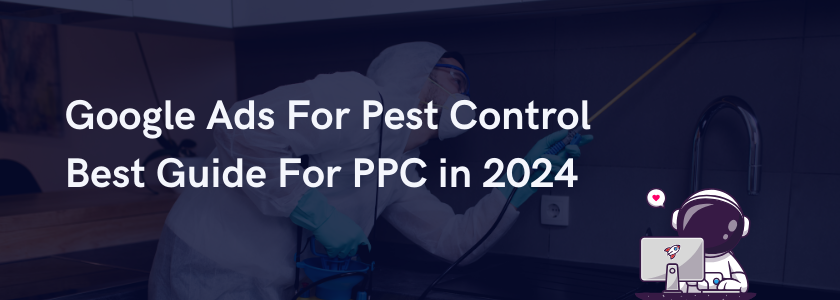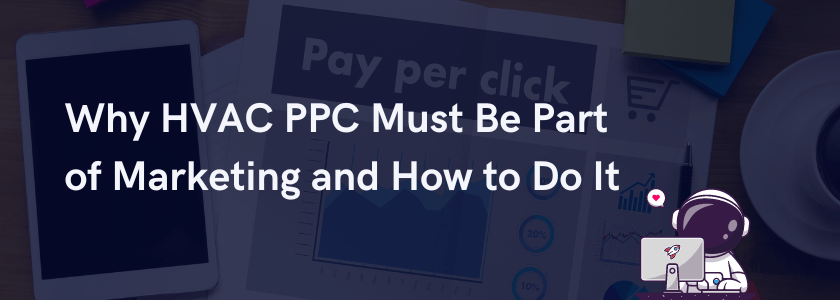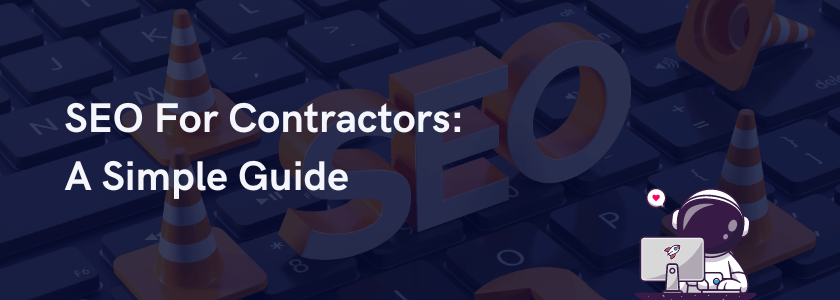The pest control industry is fiercely competitive. Homeowners and businesses are constantly searching for solutions to their pest problems. To stand out from the competition, you need a targeted strategy that reaches the right customers at the right time. Google Ads is the answer.
Coupled with the right pest control PPC services, this strategy connects you directly with potential clients actively seeking your expertise. In this guide, we’ll share the secrets to a successful Google Ads campaign and provide actionable tips to attract more leads and grow your pest control business in 2024.
Tip #1: Know Your Ideal Customer
To succeed with Google Ads for pest control, you need to know exactly who you’re trying to reach. This means going beyond simply saying “anyone with a pest problem.” Instead, identify key customer segments to refine your targeting and messaging approaches.
The first step is to distinguish between residential and commercial clients. A homeowner dealing with ants in their kitchen has different needs and concerns than a restaurant owner facing a rodent infestation.
- Residential customers might be more price-sensitive and concerned about the safety of their family and pets. Given this information, your ad copy can focus on:
☑ “Family-friendly pest solutions”
☑ “Guaranteed ant removal”
☑ “Pet-safe pest control”
- Commercial clients are often concerned with protecting their reputation and minimizing business disruptions. Examples of ad copy you can target them with are:
☑ “Protect your brand with discreet pest control”
☑ “Prevent health code violations”
☑ “Commercial pest solutions for any industry”
Secondly, think about specific pest problems. People searching for “termite treatment” have very different needs than those looking for “mosquito control.” Create separate campaigns or ad groups to target these specific searches.
- For termite treatment: “Protect Your Home from Costly Termite Damage. Free Inspections.”
- For mosquito control: “Enjoy Your Backyard Again. Effective Mosquito Treatments”
Effective pest control Google ads start with understanding your ideal customer. Target your ads to their specific needs and drive more conversions.
Next up, let’s look into keyword targeting.

Tip #2: Master Keyword Targeting
Effective keyword targeting, as part of search engine optimization (SEO) for pest control companies, is the foundation of a successful PPC campaign. It’s how you ensure your ads appear in front of the right people at the right time. Thorough keyword research is crucial for identifying the terms your potential customers are using when searching for pest control solutions.
Think about the various ways people might search for your services:
- General Pest Terms: “pest control,” “exterminator,” “pest removal”
- Location-Based Keywords: “pest control [your city],” “exterminator near me”
- Specific Pest Problems: “rat control,” “termite inspection,” “bed bug treatment”
- Seasonal Keywords: “mosquito control summer,” “rodent control winter”
Once you have a list of relevant keywords, you need to familiarize yourself with keyword match types:
- Broad Match
This is the most general option, and your ads may show for searches related to your keyword, even if they don’t contain the exact phrase. Use with caution to avoid irrelevant impressions.
- Phrase Match
Your ads will show for searches that include the exact phrase in your keyword but may have additional words before or after. This offers more control than a broad match.
- Exact Match
Your ads will only show for searches that exactly match your keyword. This provides the most precise targeting among the three.
PPC for pest control companies requires a strategic mix of match types. Start with a combination of phrases and exact match for your most important keywords to ensure you’re reaching the most qualified leads. As you gather data, you can experiment with broad matches to expand your reach.
Now that you’ve targeted the right keywords, let’s create ads that get those clicks.
Tip #3: Write Ad Copy that Doesn’t Bug Out
You’ve done the keyword research, now it’s time to write Google Ads for pest control that grab attention and drive clicks. Remember, you’re competing with other companies, so your ads need to stand out. Here’s what makes a winning Google Ad:
Headlines
You get three headlines, each with a maximum of 30 characters. Use them to highlight your key selling points and include relevant keywords.
Descriptions
You have two descriptions with 90 characters each. Expand on your headlines, provide more details about your services, and include a strong call to action.
Call-to-Action (CTA)
Tell people what you want them to do – “Call now,” “Get a free quote,” “Book online.”
Here are a few examples of compelling ad copy for pest control:
Headline 1: Ants Driving You Crazy?
Headline 2: Fast & Effective Ant Control
Headline 3: Free Quotes — Call Now!
Description 1: Licensed & insured exterminators. Safe for your family & pets.
Description 2: Get rid of ants for good. 100% satisfaction guaranteed.
Headline 1: Bed Bug Problem?
Headline 2: Discreet & Reliable Solutions
Headline 3: 24/7 Emergency Service
Description 1: We eliminate bed bugs fast. Eco-friendly treatments.
Description 2: Call now for a free consultation. Same-day service available.
PPC for pest control companies is all about showcasing what makes you different. Highlight your unique selling propositions (USPs) in your ad copy:
- Guarantees: “Money-back guarantee,” “Satisfaction guaranteed”
- Eco-friendly Methods: “Green pest control,” “Organic solutions”
- 24/7 Service: “Emergency service,” “Available 24/7”
- Special Offers: “Free inspections,” “Discounts for new customers”
With compelling ad copy in place, let’s make sure your landing pages are ready to convert those clicks.
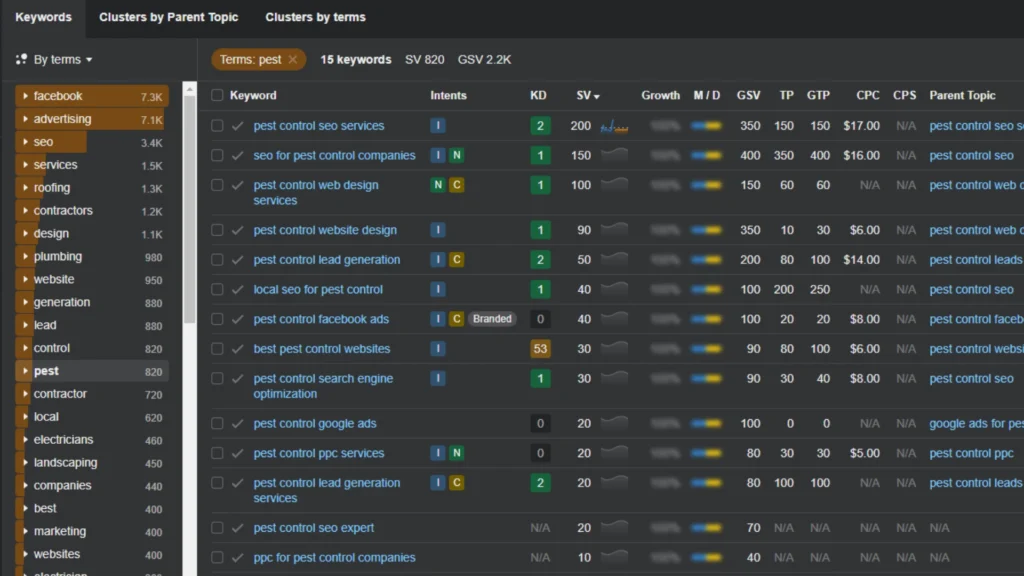
Tip #4: Optimize Your Landing Pages
When someone clicks on your pest control Google Ads, where do they land? Sending them to your homepage is like leading them into a maze. Instead, use dedicated landing pages to provide a focused and relevant experience.
A landing page is a standalone web page designed specifically for your Google Ads campaign. It should have one clear goal: to convert visitors into leads or customers. Here’s how to create high-converting landing pages:
Match Your Ad Copy
The landing page should directly reflect the promises and keywords used in your ad. For example, if your ad says, “Fast Ant Control,” the landing page headline should reinforce that message.
Provide Relevant Content
Offer detailed information about the specific services mentioned in your ad. Include images, testimonials, and any other content that builds trust and credibility.
Include a Strong Call to Action
Make it easy for visitors to take the next step. Use a clear and compelling button with action-oriented text like ‘’Get a Free Quote’’ or ‘’Call Now.’’
Ensure Fast Loading Speed
No one wants to wait for a slow page to load. Optimize your landing page for speed to improve user experience and conversions.
Prioritize Mobile-Friendly Design
Most people search for pest control services on their smartphones. Your landing page must be responsive and easy to navigate on any device.
Optimizing your landing pages creates a seamless experience for potential customers, guiding them toward the desired action, such as requesting a quote, scheduling a service, or contacting your business.
Now that you have a steady stream of visitors, it’s time to track your progress and measure those results.
Tip #5: Track Your Success (and Failures)
Launching your pest control Google Ads campaigns is just the first step. To maximize your return on investment, you need to track performance and make data-driven decisions. This is where conversion tracking becomes essential.
What is Conversion Tracking?
Conversion tracking is the process of measuring how many people who click on your ads complete a desired action, such as:
- Calling your business
- Filling out a contact form on your landing page
- Scheduling a service online
Setting up conversion tracking provides valuable insights into which ads and keywords are driving the most beneficial actions.
Key Metrics to Monitor
In addition to conversions, other metrics provide valuable insights for evaluating campaign performance. They include the following:
- Impressions: The number of times your ads are shown.
- Clicks: The number of times people click on your ads.
- Click-through rate (CTR): The percentage of people who see and click on your ad (clicks divided by impressions). A higher CTR indicates a more relevant and engaging ad.
- Conversion rate: The percentage of people who click on your ad and complete a conversion.
- Cost per conversion: The average cost you pay for each conversion.
Performing Data-Driven Optimization
Regularly analyze your campaign data to identify opportunities for improvement and make necessary adjustments. Here are a few examples:
- Low CTR? Test different ad copy, headlines, or calls to action to improve engagement.
- High cost per conversion? Refine your keyword targeting, adjust bids, or optimize your landing pages to improve conversion rates.
- Low conversion rate? Examine your landing page experience, simplify forms, or offer more substantial incentives.
A skilled pest control ppc agency can help you interpret this data and make strategic adjustments to optimize your campaigns. Effective pest control ppc services involve ongoing monitoring and optimization to ensure you get the most out of your advertising budget.
Next, let’s discuss how to use location targeting to your advantage.

Tip #6: Use Location Targeting Effectively
Pest control is a local business. People searching for “pest control” are almost always looking for services in their immediate area. That’s why location targeting is critical for your pest control Google Ads.
You can utilize location targeting to:
- Focus Your Budget
Why pay for your ads to show to people outside your service area? Location targeting ensures your ads are only seen by potential customers in the cities and regions you serve.
- Increase Relevance
When your ads appear alongside local results, they’re more likely to be clicked on. People want to see businesses near them.
- Improve Ad Ranking
Google considers location relevance when determining ad rank. Targeting the right locations can help your ads appear higher in search results.
Powerful Location Targeting Tools
- Radius Targeting
Define a radius around your business location or the areas you serve. This functionality ensures your ads reach people within a specific distance of your business.
- Location Bid Adjustments
Increase or decrease your bids for specific locations. For example, if you find that certain cities are more competitive or generate higher-value leads, you can increase your bids to improve your ad position in those areas.
Strategically use location targeting in your Google Ads for pest control to maximize your budget and reach the most qualified potential customers.
Let’s shift our focus to the small screen and discuss the importance of being mobile-friendly.
Tip #7: Don’t Forget Mobile Optimization
In today’s mobile-centric world, having a website and running Google Ads isn’t enough. Your online presence must be fully optimized for mobile devices. Imagine a homeowner discovering a family of mice in their kitchen. What’s their first instinct? To grab their smartphone and search for ‘pest control near me.’
If your pest control Google ads and landing pages aren’t mobile-friendly, you’ll miss out on these valuable leads. People expect a seamless experience on their phones, and a slow-loading website or clunky landing page will send them running to your competitors.
Tips for a Mobile-Friendly Experience
- Responsive design: Your website and landing pages should automatically adjust to fit any screen size.
- Easy navigation: Use a clear and concise menu that’s easy to tap on a small screen.
- Large font sizes: Ensure text is readable without zooming.
- Concise content: Get to the point quickly. Mobile users have shorter attention spans.
- Fast loading speed: Optimize images and code to minimize loading times.
- Simple forms: Make it easy for people to contact you or request a quote on their phones.
A mobile-optimized website enhances the user experience, leading to higher engagement, improved conversion rates, and, ultimately, more business for your pest control company.
Next, let’s learn more about the power of ad extensions to enhance your Google Ads for pest control campaigns.
Tip #8: Leverage Ad Extensions
Want to make your pest control Google Ads even more powerful? Ad extensions provide additional information and features that can boost visibility, increase click-through rates, and improve the overall effectiveness of your campaigns.
Think of ad extensions as valuable add-ons to your existing ads. They provide extra details that can entice potential customers to choose your business.
Types of Ad Extensions for Pest Control
- Location Extensions: Display your business address and a map link, making it easy for people to find your location and get directions.
- Call Extensions: Add a clickable phone number to your ad, allowing mobile users to call you directly with a single tap.
- Sitelink Extensions: Include links to specific pages on your website, such as “Residential Services,” “Commercial Pest Control,” or “Contact Us.”
- Callout Extensions: Highlight key features or offers, such as “24/7 Emergency Service,” “Free Inspections,” or “Eco-Friendly Solutions.”
Examples of Persuasive Ad Extensions
- Location Extension: “Serving [Your City] & Surrounding Areas – Get Directions”
- Call Extension: “Call Now for a Free Quote – [Your Phone Number]”
- Sitelink Extensions: “Residential Pest Control | Commercial Services | Bed Bug Removal”
- Callout Extensions: “Family-Safe Treatments | Licensed & Insured | 100% Satisfaction Guarantee”
Use ad extensions to provide more information to potential customers, making your pest control Google ads more compelling and informative. This can boost click-through rates, improve ad rank, and generate more leads for your pest control business.
The following section will teach you how to fine-tune your campaigns with ad scheduling.
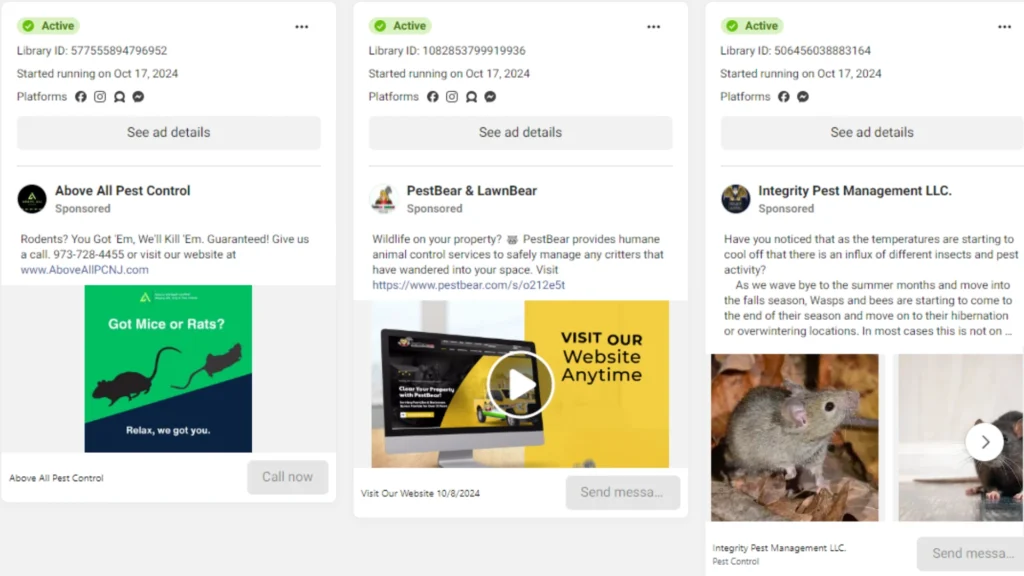
Tip #9: Experiment with Ad Scheduling
Did you know you can control when your pest control Google Ads appear? Ad scheduling allows you to fine-tune your campaigns to reach potential customers at the most opportune times. This can be a game-changer for pest control PPC services, as timing often plays a significant role in customer behavior.
Why Ad Scheduling Matters
- Align with Customer Needs: People might be more likely to search for pest control services during certain hours or days. For instance, evenings and weekends might be peak times when people are home and notice pest issues.
- Optimize Budget Allocation: Allocate your advertising spending strategically to reach potential customers when they are most likely to convert.
- Increase Efficiency: Avoid wasting ad spend when your target audience is less likely to be active online.
Ad Scheduling Strategies for Pest Control
Dayparting
Divide the day into segments and adjust bids or ad scheduling accordingly. For example, you might increase bids during evenings or weekends when people are more likely to be researching pest control solutions.
Seasonal Scheduling
Adjust your campaigns to align with peak pest seasons. Increase bids or run specific campaigns during months when certain pests are more prevalent (e.g., mosquito control in the summer, rodent control in the winter).
Day of the Week Targeting
Analyze your data to identify which days of the week generate the most leads or calls. Adjust your bids or schedule ads accordingly.
Experimenting with ad scheduling lets you refine your PPC campaign and ensure your ads appear when they are most likely to generate results. This can lead to improved campaign performance and a higher return on your advertising investment.
Finally, let’s look at how you can re-engage potential customers with remarketing.
Tip #10: Consider Remarketing
Not everyone who clicks on your pest control Google Ads will immediately convert into a customer. Some people may need more time to research, compare prices, or decide if they’re ready to take action. That’s where remarketing comes in.
Remarketing allows you to reconnect with people who have previously interacted with your website or ads. It’s like a gentle nudge to remind them of your services and encourage them to return.
How Remarketing Works
When someone visits your website, a small piece of code (a “cookie”) is placed in their browser. This cookie allows you to show targeted ads to that person as they browse other websites on the Google Display Network.
Benefits of Remarketing for Pest Control
- Increased Brand Awareness: Keep your business top-of-mind even after someone leaves your website.
- Improved Conversion Rates: Re-engage potential customers who showed initial interest but didn’t convert.
- Targeted Messaging: Tailor your ads to specific audience segments based on their past behavior on your website.
- Cost-Effective: Remarketing campaigns often cost less per click than traditional search campaigns.
Remarketing Strategies to Consider
Target Website Visitors
Show ads to people who visited your website but didn’t request a quote or schedule a service.
Promote Special Offers
Offer discounts or incentives to entice people to return to your website.
Highlight Specific Services
If someone visits a page about termite control, show them remarketing ads specifically about your termite treatment services.
Use Dynamic Remarketing
Show ads featuring the specific products or services people viewed on your website.
Remarketing is a valuable tool for creating a comprehensive marketing strategy. By staying connected with potential customers, you can increase the chances of converting initial clicks into valuable leads. It’s a powerful addition to your PPC for pest control companies arsenal.
Launch Your Pest Control PPC Campaign Today!
Establishing a solid online presence is a must in the competitive pest control industry. Google Ads offers a powerful way to connect with customers who are actively searching for your services. Implementing the strategies outlined in this guide can significantly improve your chances of success in 2024 and beyond.
However, managing Google Ads requires time, expertise, and ongoing optimization. If you want to maximize your return on investment, consider partnering with a specialized pest control PPC agency. We handle the complexities of campaign management, allowing you to focus on what you do best: providing exceptional pest control services.
Tired of being lost in the crowd of pest control businesses? Contact us for a free consultation and discover how our expert pest control PPC services can help you stand out and attract more leads. Book a call today!


